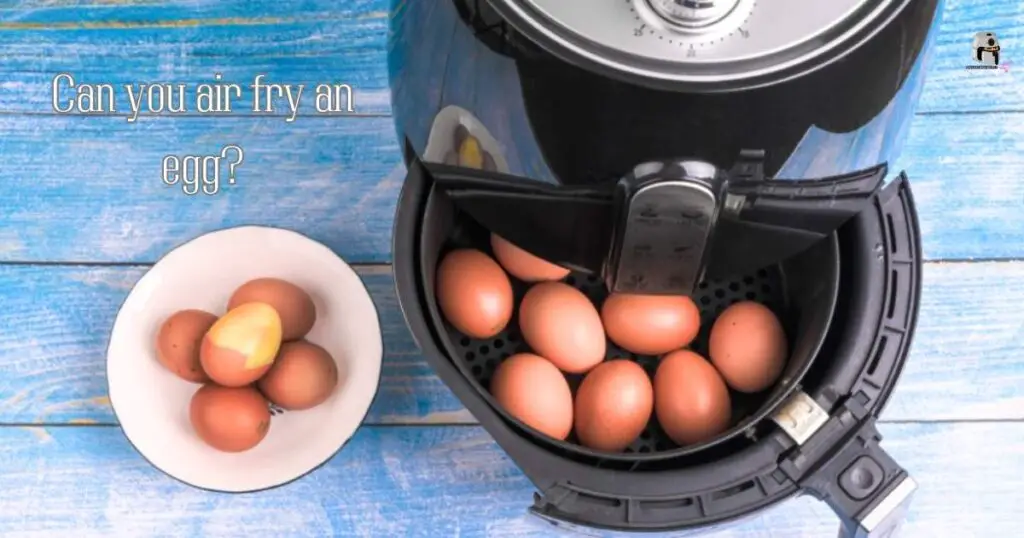Table Of Contents
Introducing the delectable world of vegan latkes made effortlessly in an air fryer. These crispy potato pancakes, traditionally fried to perfection, get a healthy and cruelty-free makeover. In this culinary journey, we’ll explore how to create these golden delights without the excess oil while maintaining that signature crunch.
Whether you’re a seasoned vegan chef or just venturing into the world of plant-based cooking, this guide will walk you through the steps, ensuring your vegan latkes turn out irresistibly crispy and flavorful. Get ready to savor the joy of these guilt-free, air-fried treats that are perfect for any occasion.

What Are Vegan Latkes?
Vegan latkes are a plant-based version of the classic Jewish potato pancake. They are typically made by shredding potatoes and mixing them with ingredients like onions, flour (or chickpea flour for a gluten-free option), and seasonings.
Instead of eggs, which are not vegan, binders like baking powder or flaxseed are often used. These mixture patties are then fried or air-fried until crispy and golden brown. Vegan latkes offer a cruelty-free and delicious alternative to traditional potato pancakes.
How to Make Vegan Latkes Air Fryer
Certainly, here are detailed steps on how to make latkes in an air fryer:
Ingredients
- Large russet potatoes: 4
- Medium onion: 1
- All-purpose flour (or chickpea flour for a gluten-free option): 1/4 cup
- Baking powder: 1tb
- Salt (adjust to taste): 1tb
- Black pepper (adjust to taste): 1/2tb
- Cooking spray (for greasing the air fryer basket)
Instructions
Preparation
- Begin by peeling the potatoes and placing them in a bowl of cold water to prevent browning.
- Grate the potatoes. You can use a food processor with a grating attachment or a box grater.
- Place the grated potatoes in a clean kitchen towel or cheesecloth and squeeze out as much liquid as possible. To get crispy latkes, you must take this step.
- Grate the onion and add it to the drained potatoes, mixing them thoroughly.
- In a separate bowl, combine the flour, baking powder, salt, and black pepper.
- Add the dry ingredients to the grated potato and onion mixture. Mix everything until well combined.
Forming the Latkes:
- Preheat your air fryer to 375°F (190°C). This may take 3-5 minutes.
- Lightly grease the air fryer basket with cooking spray to prevent sticking.
- Take portions of the mixture (about 1/4 cup each) and shape them into latkes, about 1/4 to 1/2 inch thick. You can change the size to suit your tastes.
- Place the formed latkes on a plate or tray lined with parchment paper, ensuring they don’t overlap.
Air Frying:
11. Carefully arrange the latkes in a single layer in the preheated air fryer basket, ensuring they are not overcrowded. You may need to cook them in batches depending on the size of your air fryer.
- Lightly spray the tops of the latkes with cooking spray to help them achieve that golden crispiness.
- Cook for about 10-12 minutes, flipping them halfway through the cooking time. The latkes should become golden brown and crispy.
- Monitor them towards the end of the cooking time to ensure they don’t overcook or burn. According on the air fryer model, cooking times may change.
- Once done, transfer the air-fried latkes to a plate lined with paper towels to blot any excess oil.
Serving:
- Serve your vegan latkes hot and crispy. They are delicious on their own or with various toppings like vegan sour cream, applesauce, or a sprinkle of freshly chopped chives.
Read More:
Reasons for Using Vegan Latkes
There are several compelling reasons for choosing vegan latkes:
1. Ethical Considerations
Vegan latkes are prepared without animal-derived ingredients, making them a compassionate choice for those who are concerned about animal welfare. They avoid the use of eggs and dairy, reducing the demand for these products.
2. Health Benefits
Vegan latkes tend to be lower in saturated fats and cholesterol compared to traditional latkes, which are often fried in oil and made with eggs. This makes them a heart-healthy option that can help lower the risk of cardiovascular issues.
3. Food Allergies and Sensitivities
For individuals with dairy allergies, lactose intolerance, or egg allergies, vegan latkes offer a safe and enjoyable way to savor this classic dish without any concerns about adverse reactions.
4. Dietary Restrictions
Vegan latkes are suitable for various dietary preferences, including vegan, vegetarian, and plant-based diets. They allow individuals to partake in holiday or cultural traditions without compromising their dietary choices.
5. Environmental Impact
Compared to diets that mainly rely on animal products, plant-based diets have a smaller environmental impact. Choosing vegan latkes can contribute to reducing greenhouse gas emissions and conserving resources.
6. Inclusivity
Serving vegan latkes at gatherings ensures that everyone can enjoy the food, regardless of their dietary choices or restrictions. It promotes inclusivity and eliminates the need for separate dishes.
7. Experimentation and Culinary Creativity
Preparing vegan latkes opens the door to culinary creativity. You can explore various plant-based ingredients, such as chickpea flour or flaxseed, to bind the latkes and experiment with flavors, textures, and toppings.
8. Health-Conscious Choices
For individuals looking to make healthier food choices and incorporate more plant-based foods into their diet, vegan latkes offer a delicious and familiar option. They are a stepping stone toward a more plant-focused lifestyle.
9. Cultural Awareness
Preparing vegan versions of traditional dishes like latkes shows cultural appreciation and inclusivity. It demonstrates that cultural foods can be adapted to accommodate diverse dietary preferences and needs, fostering understanding and respect.
In essence, using vegan latkes allows individuals to enjoy a beloved dish while addressing ethical, health, dietary, and environmental considerations, making it a versatile and inclusive culinary choice.
Latkes Recipe Substitutions
Certainly, here are some common latke recipe substitutions you can make:
Potato Substitutes
- Sweet Potatoes: To add a natural sweetness and a hint of earthiness, substitute some or all of the white potatoes with sweet potatoes. This variation yields sweet potato latkes, which are slightly sweeter and have a beautiful orange color.
- Zucchini: For a lighter and lower-carb option, you can replace some of the potatoes with grated zucchini. Zucchini latkes have a milder flavor and a moist, tender texture.
Flour Substitutes
- Matzo Meal: If you’re observing Passover or prefer a more traditional Jewish latke, use matzo meal instead of regular flour. It adds a unique texture and flavor.
- Almond Flour: For a gluten-free version, almond flour is an excellent substitute for all-purpose flour. It provides a slightly nutty flavor and helps create a crispy exterior.
- Cornstarch: Another gluten-free option is cornstarch, which contributes to a crispy latke texture. It’s especially useful for those with celiac disease or gluten sensitivities.
Egg Substitutes
- Flaxseed Meal: To make your latkes vegan or if you have an egg allergy, prepare flax eggs. Mix one tablespoon of flaxseed meal with three tablespoons of water and let it sit for a few minutes until it thickens. It acts as a binding agent in the absence of eggs.
- Chia Seeds: Similar to flax eggs, chia eggs can be created by combining one tablespoon of chia seeds with three tablespoons of water. Allow it to gel before using it in your latke recipe.
Seasoning Substitutes
- Herbs: Experiment with fresh herbs like rosemary, thyme, or dill to impart a unique and aromatic flavor to your latkes.
- Spices: Customize your latkes with different spices. For a smoky flavor, use smoked paprika; add a kick with cayenne pepper, or infuse an exotic twist with curry powder.
Dairy Substitutes
- Non-Dairy Milk: Replace dairy milk with non-dairy alternatives such as almond milk, soy milk, coconut milk, or oat milk. This substitution makes your latkes dairy-free.
- Vegan Cheese: If you’re aiming for vegan latkes, you can use plant-based cheese alternatives. These dairy-free cheeses come in various flavors and can add creaminess to your recipe.
Cooking Oil Substitutes
- Avocado Oil: For a healthier cooking oil, consider using avocado oil instead of traditional vegetable oil or canola oil. It has a high smoke point and a mild flavor.
- Ghee: If you desire a rich, buttery flavor, ghee, which is clarified butter, can be used for frying your latkes.
Toppings and Condiments
- Sour Cream Substitute: Opt for dairy-free sour cream or yogurt to maintain a vegan or lactose-free diet while enjoying the classic sour cream topping.
- Applesauce: Instead of sour cream, serve your latkes with unsweetened applesauce for a sweet and fruity contrast. This is a traditional topping that’s both delicious and suitable for various dietary preferences.
How Can Beginners Get Started With Vegan Cooking
Starting with vegan cooking as a beginner can be exciting and rewarding. Here are some steps and tips to help you embark on your vegan cooking journey:
- Educate Yourself: Start by researching the principles of veganism. Understand why people choose this lifestyle, including ethical, environmental, and health reasons.
- Gather Resources: Explore vegan cookbooks, websites, blogs, and YouTube channels. These sources often provide beginner-friendly recipes, cooking techniques, and meal-planning tips.
- Begin with Familiar Dishes: Ease into vegan cooking by starting with recipes that are familiar to you. For instance, try making vegan versions of spaghetti, stir-fries, or salads using plant-based ingredients.
- Plan Your Meals: Plan your meals for the week ahead. Select a few recipes that you want to try, create a shopping list, and ensure you have all the ingredients on hand.
- Stock Your Pantry: Maintain a well-stocked pantry with essential vegan staples like grains (rice, pasta), legumes (beans, lentils), canned tomatoes, spices, herbs, vegetable broth, nuts, and plant-based milk.
- Explore Plant-Based Proteins: Experiment with various plant-based protein sources such as tofu, tempeh, seitan, chickpeas, and black beans. These ingredients can be used in a wide range of recipes.
- Master Cooking Techniques: Develop essential cooking skills like chopping, sautéing, roasting, steaming, and baking. These skills form the foundation of vegan cooking.
- Play with Flavors: Feel free to explore herbs, spices, and seasonings. Vegan dishes can be incredibly flavorful, so experiment with different combinations to discover your favorites.
- Nutritional Awareness: Pay attention to your nutritional needs, including protein, iron, calcium, and vitamin B12. Ensure you incorporate various foods and consider supplements or fortified foods as needed.
- Whole Foods Emphasis: Prioritize whole plant foods like fruits, vegetables, whole grains, nuts, and seeds in your diet. They provide essential nutrients and versatility in vegan cooking.
- Convenience Items: While whole foods are key, you can also use vegan convenience items like plant-based burgers, vegan cheese, and meat alternatives as you transition. They can simplify meal preparation.
- Be Patient and Persistent: Understand that mastering vegan cooking may take time. Don’t be discouraged by initial challenges, and be open to learning from both successes and mistakes.
- Connect with the Community: Join vegan forums, social media groups, or local meetups to connect with others on a similar journey. You can exchange ideas, recipes, and support.
- Keep Exploring: Continuously try new recipes and explore different cuisines. Vegan cooking offers a diverse world of flavors and culinary experiences.
- Celebrate Your Progress: Acknowledge and celebrate your achievements, whether it’s a delicious meal you’ve prepared, a new cooking skill you’ve acquired, or simply sticking to your vegan journey.
FAQs
What is the Difference Between a Potato Pancake and a Latke?
The primary difference between a potato pancake and a latke lies in their cultural and culinary context. A potato pancake is a general term used to describe pancakes made from grated potatoes and other ingredients. At the same time, a latke specifically refers to a traditional Jewish potato pancake, often thinner and crisper, associated with Hanukkah celebrations.
What Do You Serve With Latkes?
Great side dishes to accompany latkes include Greek yogurt, garden salad, smoked cod, applesauce, tzatziki sauce, stuffed mushrooms, poached egg, brisket, cucumber salad, herring, red onion marmalade, roasted beet salad, sour cream, chicken soup, and lox, enhancing the overall dining experience.
Should Latkes Be Deep-fried?
Yes, latkes should be deep fried to achieve their signature crispy texture. However, they can also be pan-fried or baked for a lighter version. Deep-frying imparts the classic taste and texture, while alternative methods offer a healthier twist. Ultimately, the choice depends on your preference and dietary considerations.
Final Verdict
In summary, making vegan latkes in an air fryer is a fantastic choice for those seeking a healthier and oil-free alternative to the traditional fried version. It yields crispy and delicious latkes without the need for excess oil.
By using simple vegan ingredients and the air fryer’s convenience, you can enjoy this flavorful potato pancakes guilt-free. Whether you’re vegan or simply looking for a lighter latke option, the air fryer offers a convenient and tasty way to prepare this classic dish. Give it a try, and savor the crispy goodness of vegan latkes with ease.
You May Also Like to Read:







